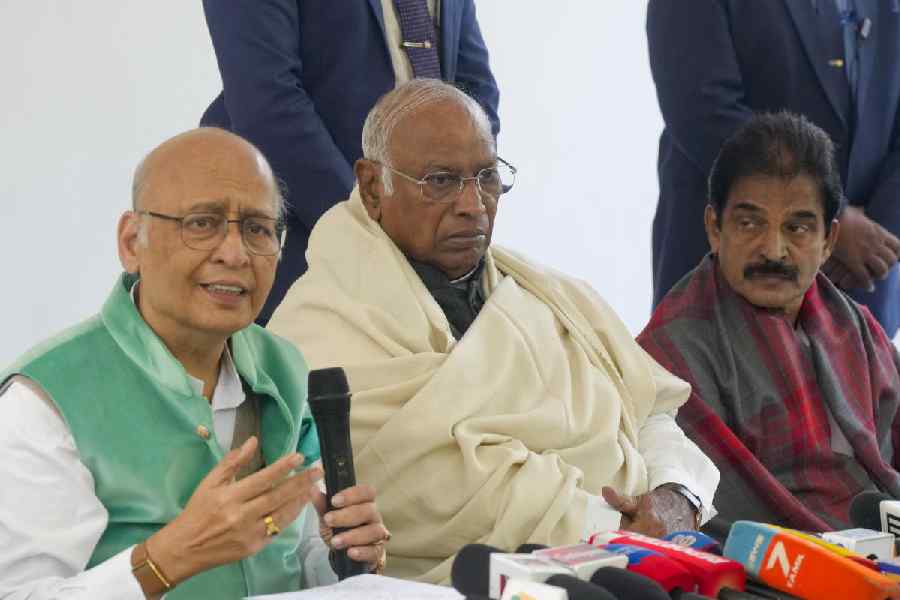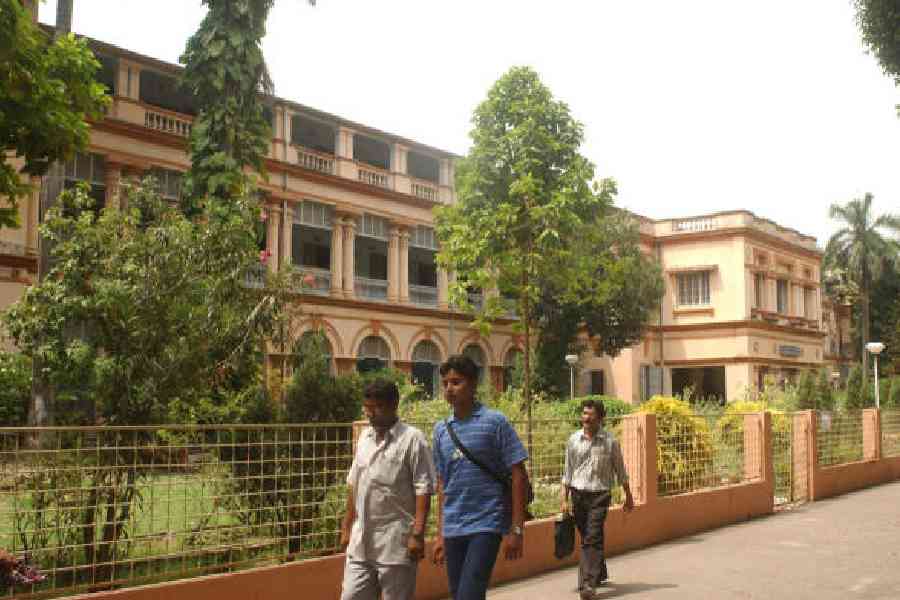K .S. Radhakrishnan is synonymous with the resurgence in Indian sculpture. His delicate human forms, brimming with dance, drama and performance, inspire awe and delight, among a multitude of other emotions, in the viewer. This was borne out, once again, in his recent show, The Crowd and its Avatars, curated by the renowned art historian, R. Siva Kumar, at Emami Art.
The most impactful of all the works perhaps was the installation of fifty life-sized bronze figures titled The Crowd, which, even though it was populated by an equal number of male and female figures, repeated the faces of two characters, Musui (male) and Maiya (female), who have been part of Radhakrishnan’s idiom since 1996. Instead of looking at the installation as just an artwork, the viewer — while walking amidst these sculptures — becomes a part of the crowd. The sculpture is a celebration of the quotidian: these figurines represent people we might meet at street corners. But it also signifies the power of a crowd — the nameless, faceless mass that can come together to make or break nations.
The works on display can be loosely divided into three categories. There are the lone-figure sculptures that highlight the supple agility of the human form. Then there are the ‘Ramps’, where multitudes of tiny people teeter on the edge of a plane, which can lead to equal parts hope and equal parts uncertainty. Lastly, there are the smaller sculptures where diminutive human figures appear like shape-shifting murmurations.
Radhakrishnan also explores the human body in all its anatomical sensuousness and expressive potentiality. His works are shaped by his artistic meditations on migration, history, memory, loss and nostalgia, demonstrating his deep engagement with the world. Strikingly, no matter how precarious the position of the figures,they are always smiling, always moving, always evolving. They seem to have accepted the lack of meaning in life and live for momentary beauty — their bodies elevated by the unbearable lightness of being.










